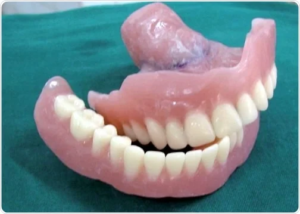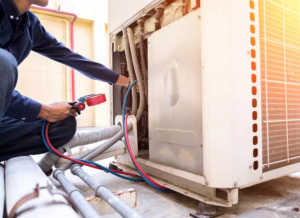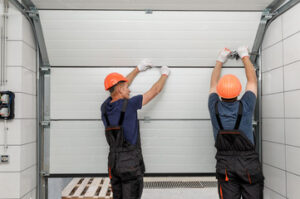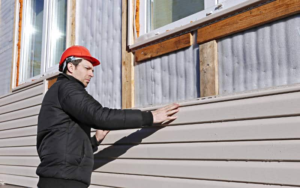Mold Remediation is a process that includes several different strategies to keep your family safe from the health risks of long-term mold exposure. These include assessment and inspection; containment; removal; cleaning and disinfection.
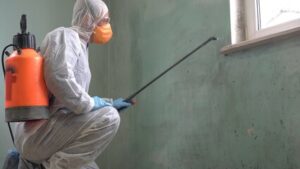
Before starting any work, a restoration company will usually enclose the area and isolate it from the rest of the home. This will help prevent cross-contamination of other areas not affected by the mold.
Mold contamination can spread quickly, especially if there is a lot of it and it is accompanied by water damage. Taking steps to prevent the spread of mold during and after remediation is crucial for minimizing or even eliminating the damage. This step involves reducing humidity levels and preventing air movement between the affected area and unaffected areas of the home or building. It also involves containing the affected area to limit cross-contamination of other areas by mold spores. Remediators use their professional judgment to determine whether a particular building occupant or worker may need to wear protective equipment while performing remediation. Minimum personal protective equipment includes an N95 respirator, eye goggles without vents and rubber gloves that extend to the middle of the forearm.
Once the area is contained, the mold remediation team will use a biocide, a liquid that is approved by the Environmental Protection Agency to kill mold spores. The biocide will be sprayed in the affected space and allowed to set for a few hours, or until the space is deemed to be free of mold spores. Porous materials, such as drywall, plaster and fabric-covered items, will be removed and placed in heavy plastic bags. Non-porous materials, such as appliances and electrical wiring will be cleaned or wiped with commercial grade antimicrobial sprays.
After the contaminated material is removed, the area will be sealed to prevent the spread of mold spores. The professionals will also clean the air with an air scrubber and perform a thorough cleaning and disinfection of the affected area. The mold removal crew will also clean and disinfect all surfaces that have been contaminated by mold, including carpeting and personal belongings.
Depending on the severity of the mold problem, the remediation company may offer additional services, such as reconstruction or contents restoration. Contents restoration is the process of restoring items that have been ruined by water damage, such as furniture, fabrics and documents. Using advanced contents restoration technologies, many items that were once thought to be lost can now often be saved. The contents restoration company will typically begin the contents pack out near the beginning of the remediation process, removing saveable items such as clothes, shoes and books from the affected area.
Removal
Once the mold growth has been identified and the moisture source addressed, the next step is to clean up the affected areas. Most professional mold remediation services are IICRC-certified and use industry-approved cleaning products, tools, and equipment to remove all visible signs of mold. These services are also able to find and fix hidden moisture sources that could have contributed to the mold growth.
As part of this process, the restoration company may need to tear out some drywall and insulation, as well as clean any other surfaces. They will then restore and sanitize the area and clean and disinfect any personal items that can be saved. This includes carpeting, furniture, hard goods, clothing and more.
It’s important to remember that microscopic mold spores are always present in the air. It’s impossible to completely eliminate all mold spores in the air, even with professional cleaning and remediation. The goal is to reduce the number of mold spores to a level that’s acceptable for your home and family.
Before a restoration company comes to clean the mold, it’s recommended that you clear a path for them to move around your house or business, and make sure that any pets and people with compromised immune systems are kept out of the way of the work zone. It’s also a good idea to fix any water problems, like a leaky pipe or condensation on windows and walls, so the mold doesn’t spread.
During the cleanup and removal process, it’s important to wear disposable gloves, boots and a mask to prevent contact with any of the mold spores. For large jobs, full containment is often used, which consists of double layers of polyethylene to create an enclosed decontamination chamber with a slit entry and exit for workers. It’s also a good idea for anyone working on the project to wear protective eyewear, a respirator and a face mask.
Any porous materials that have been damaged by the mold will be bagged in thick, airtight bags and sprayed with a biocide to kill any remaining spores. Then, they’ll be disposed of according to EPA standards. Non-porous items that have been contaminated by mold will be cleaned and disinfected, including metals, bathtubs, sinks, and tiles.
Containment
Creating a containment barrier is a vital step in the process of mold remediation. It helps prevent cross-contamination of unaffected areas and protects people and their belongings from harmful spores. Remediators use a variety of methods to create and execute containment plans. Depending on the circumstances, they may use physical barriers, seal off HVAC systems, and set up negative air machines to ensure that mold spores are contained.
Containment also involves removing porous materials such as carpeting and padding, wallpaper, wood, and some fabrics. These are difficult to clean and can continue to harbor spores even after cleaning. They are often discarded or stored in the affected area until they can be cleaned and dried. In addition, any wet items should be placed in plastic bags and sealed. These can be stored in a garage or other outside space until they are dry.
The next step is to use a respirator or other PPE to prevent contact with the mold and any contaminants that may be present in the work area. This is necessary because some fungi produce mycotoxins, which can cause serious illnesses if inhaled over long periods of time. These include histoplasmosis, cladosporium and aspergillosis.
Once the area is contained, it is possible to begin mold removal. This may involve scrubbing or wiping down surfaces, using a vacuum cleaner with a HEPA filter, or spraying a surface with a mold-killing product. Remediators should avoid disturbing the existing mold, as this can spread the spores to other areas of the property and cause additional contamination.
To further ensure that the contaminated area does not spread, it is crucial to use containment hallways to provide pathways from the contaminated area to unaffected areas of the building. Additionally, negative air machines should be used to continually filter the air in the containment area. This is particularly important if a large amount of spores are expected to be released during the cleanup. In addition, workers should wear disposable clothing, gloves, goggles and a respirator to minimize their exposure. The air should also be tested before allowing people back into the area to ensure that it is free of fungal particulate and other contaminants.
Cleaning
Mold spores circulate in the air and can spread quickly. Therefore, it’s important to take steps to prevent the spread of mold throughout your home. For example, don’t touch any visible mold with bare hands or use household cleaners on it. Disturbing mold can cause it to release more spores into the air, which can lead to more serious health problems. Exposure to mold spores can trigger allergies and respiratory illnesses in people with sensitive immune systems. Symptoms of exposure can include runny nose, sneezing, congestion, rashes and irritation to the eyes, nose, throat and lungs.
The next step is to clean the area and disinfect it to kill any surviving mold spores. For nonporous surfaces, such as countertops and cabinets, you can wipe them down with water and detergent. For more porous or absorbent materials, such as drywall and carpet, you may need to scrub them with a brush or cloth and then dry the area completely.
You can also use a solution of no more than 1 cup of bleach and one gallon of water to kill mold growth on surfaces. However, it’s important to wear gloves and a mask when using bleach solutions or any other strong cleaning agent. The fumes can be toxic if inhaled, so you should always work outdoors or in a well-ventilated room.
Finally, you can wipe down and vacuum hard surfaces with a HEPA (High-Efficiency Particular Air) vacuum cleaner to remove lingering spores. You can also use a dehumidifier to remove moisture from the air, which will help keep mold spores at bay. After the cleanup, you should have a final inspection to ensure that all the mold has been removed and that the property is safe for habitation.
If you want to prevent future mold growth, fix the source of the moisture problem as soon as possible. In addition, increase ventilation by running a fan or opening windows and doors. Also, clean frequently in areas that are susceptible to mold growth, such as the grout lines of a ceramic tile shower. Mold spores can grow almost anywhere there is moisture and darkness.

